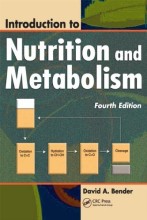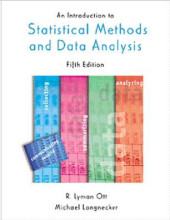NP2 Anticipation to a meal
22 important questions on NP2 Anticipation to a meal
What is the cephalic phase?
What are the effector responses during the cephalic and oral phases? And where are they mediated by?
Effector response
- Salivary secretion
- Gastric secretion
- Pancreatic enzyme secretion
- Gallbladder contraction
- Relaxation of the sphincter of Oddi
Cephalic phase gastric acid secretory responses are meal dependent. What is it for the following meals?
- Sham feeding
- Self selected meal
- Regular meal
- Bland meal (=tasteless)
- Sham feeding
- 0-30 -> 13
- Self selected meal
- 0-105 -> max 16
- Regular meal
- 0-90 -> max 8
- Bland meal (=tasteless)
- 0-90 --> 0-1
- Higher grades + faster learning
- Never study anything twice
- 100% sure, 100% understanding
How does the gastric secretion during the cephalic phase prepared the stomach for digestion?
Regulation of energy intake involves integration of short and long term signals from many sources, name a few
- mood
- anticity
- aroma
- appearance
Long term
- growth
- pregnancy
- cognition
- lactation
- society
- habit
It all effects the hypothalamus / brain stem and also the taste, gut receptors and metabolic signals
What is the oral phase? What does the oral cavity do?
Food in the mouth
What does saliva contain? And what are the functions of the constituents of saliva?
- Mucins --> lubrication
- Amylase --> digestion of starch
- Lipase (lingual) --> digestion of fat
- Lysozyme --> antibacterial
- IgA --> immune protection
- Nerve growth factor --> ? Protective
- epidermal growth factor --> ? Protective
Where is the salivary amylase activity maintained?
The amylase activity lowers when the pH lowers --> in the stomach
from the 100 units of salivary amylase only 50 units are over at the end of the stomach
What does swallowing induces?
Which type of stimulus is not a trigger of the cephalic phase response of the body?
- smell
- taste
- sight
- hearing
The stomach is divided into three regions by function. What are the regions and what are the functions?
- luminal secretion: Mucus, HCO3-
- motility: prevention of reflux, entry of food, regulation of belching
Fundus and Body
- luminal secretion: H+, intrinsic factor, mucus, HCO3-, pepsinogens, lipase
- motility: reservoir, tonic force during emptying
Antrum and Pylorus
- luminal secretion: Mucus, HCO3-
- motility: mixing, grinding, sieving, regulation of emptying
* LES is part of the esophagus
Where is the receptive relaxation in the proximal stomach dependent on?
the intraluminal pressure increases with volume after vagotomy
The meal is more verdeeld through the stomach after vagotomy. And also more food enters the stomach...?
Specific gastric cells secrete products which play a role in digestion and absorption. What are the products and functions of the following cell types
- Surface cells & Neck cells
- Parietal cells
- Chief cells
- Endocrine cells
- Surface cells & Neck cells
- mucus, HCO3-, trefoil peptides
- lubrication, protection
- Parietal cells
- H+, intrinsic factor
- protein digestion, binding of cobalamin (vitamin B12)
- Chief cells
- pepsinogen, gastric lipase
- protein digestion, triglyceride digestion
- Endocrine cells
- gastrin, histamine, somatostatin
- regulation of acid secretion
How does the cobalamin (vitamin B12) absorption and storage goes?
B12 binds to HC and moves from the stomach to the duodenum. In the duodenum the pancreas releases proteases. Together with the oligopeptides B12 now binds to the IF. [because the HC is digested by the proteases from the pancreas] In the terminal ileum there is a portal circulation to the liver, where B12 attached to IF can go through and can than be stored in the liver.
Which cells does the vagal activation stimulates via neurotransmitters?
- Pepsinogen and HCL in/for the lumen
- Histamin in/for the lamina propria
- Gastrin in/for the blood
Ionic concentrations in gastric juice vary with secretory rate. How?
- Meal-stimulated secretion
- Cl- high
- H+ zich
- Na+ decreases
- K+ and HCO3- remain low
The stomach alters the physical and chemical characteristics of the meal. How are the following things altered?
- bolus
- triglyceride
- protein
- starch
- water and ions
- bolus
- emulsion suspension [small particles (<2mm)]
- triglyceride
- triglyceride + small amount of 2-monoglycerides and free fatty acids
- protein
- protein + small amount of peptides and amino acids
- starch
- strach + 20% oligosaccharides
- water and ions
- addition of 500 pls of water and ions with low pH and increased osmolality
How does gastric emptying go?![]()
- Pyloric flow
- Peristaltic wave
How long does gastric emptying takes for solid, porridge and liquid meals?
Gastric emptying for liquids depends on ...
- hypertonic
- hypotonic
- isotonic
the amount of glucose
When dietary proteins enter the stomach:
- pepsin is already present
- the first pepsinogen has to be converted to pepsin
- pepsinogen has first to be release
- pepsinogen and Hal have first to be released
- pepsin is already present
In response to a low pH in the stomach lumen:
- Somatostatin inhibits the gastrin secretion
- The pyloric sphincter opens
- More pepsinogen is being released
- More bicarbonate is released by the pancreas
- Somatostatin inhibits the gastrin secretion
The question on the page originate from the summary of the following study material:
- A unique study and practice tool
- Never study anything twice again
- Get the grades you hope for
- 100% sure, 100% understanding
































